QUICK HITS
Emma Watson invests in reproductive health company Hertility
Unilever sells Russian business after pressure from campaigners
The first thing I did this morning was say a prayer, the second was watch the Victoria’s Secret Fashion Show. If I had essay-worthy commentary, an essay would have been written. But I don’t, so here we are. The one question I’ve had since learning about the show's reboot was not why, but how. The why was always obvious—they want to reinvigorate a brand in decline. I’d argue there are much better ways to do this, but nostalgia’s siren song calls to us all. Still, Victoria’s Secret is in decline, and these shows aren’t cheap. How were they going to fund this thing? The decadent costumes, A-list models, venue, performances… Well, if you knew what to look for, it’s pretty clear the producers had the same question in mind. This was a show on a Budget. Capital B. From the set design to the costume design, a quick comparison to their last few shows makes this obvious. And honestly, fair enough. If I were their team, I’d approach this comeback the same way, as an MVP: What’s the least we can spend on this thing to figure out the ROI?


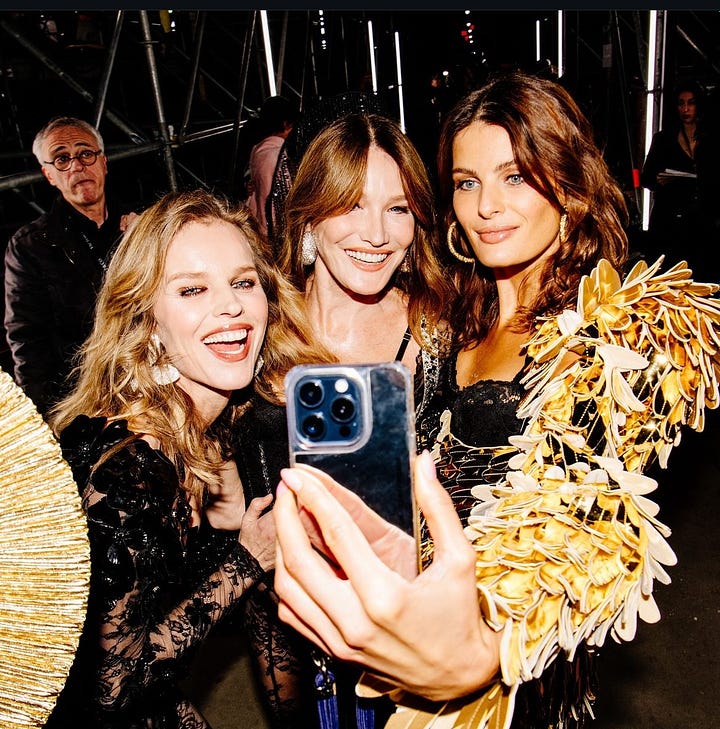
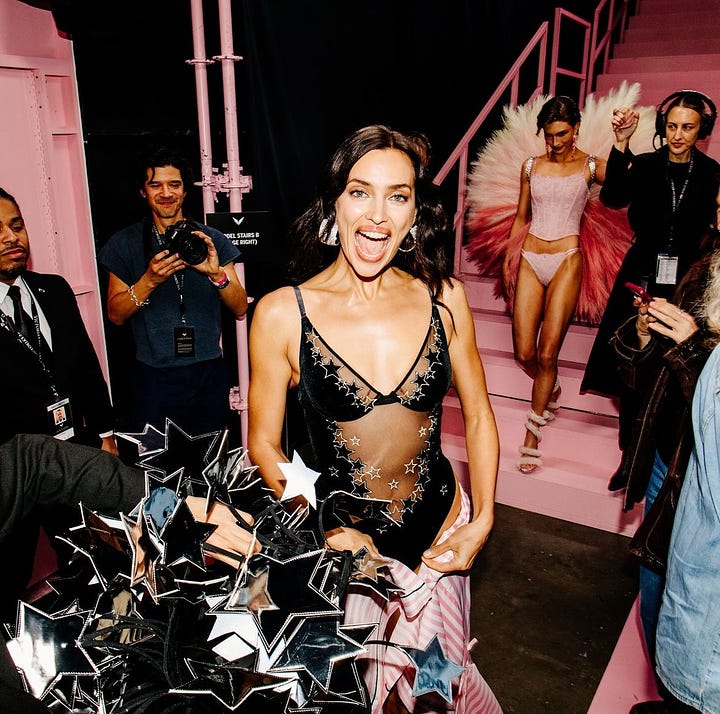
I have a hunch that this fiscal discretion might have also influenced their casting decisions. They had about four plus-sized models—no more or less than I expected—but the real diversity came from the number of models over 40 who walked the stage. Carla Bruni, Kate Moss, and legendary VS Angels like Tyra Banks, Adriana Lima and Alessandra Ambrosio all made appearances. There were others too, likely roped in for nostalgia’s sake, but also because I’d assume many would be willing to walk for a lot less than they’re typically paid these days, also for nostalgia’s sake. It’s too early to tell what impact the show had on brand perception, but I’m guessing not much. Besides, I think what’s most important is what Victoria’s Secret does in the next few weeks and months, while whatever hype they’ve created remains. They still have a lot of ground to cover, but not in the way you think.
Victoria’s Secret was such a shit brand.
writes all about it. But the sad truth is that they weren’t much worse than most fashion brands of their time, and many of our time too. People think Victoria’s Secret is in decline because they're canceled—I think they’re just irrelevant. Their atrocities are many and well-documented, but culture has the memory of a goldfish, and these days anyone can slap 'empowerment' on anything and call it a day. Think of Balenciaga, Alexander Wang, Loro Piana, Tarte, Shein, Brandy Melville—brands that have been canceled, or should have been, but are still thriving. Why? The difference between them and VS is that whatever value they provide—quality, status, or savings—compensates for all the shit they pull. People and brands only ever really get canceled when culture is ready to be done with them; when they have no more value to offer. Victoria’s Secret’s greatest sin was never size zero models, it was holding on to an outdated brand playbook long past its sell by date. I promise you, if VS actually started putting out great social-first campaigns, showed more awareness of the cultural zeitgeist, and invested in product innovation, the market would be in their favor again, all sins forgiven. Consider Abercrombie & Fitch, another former Lex Wexner brand. Clearly, the only thing more interesting than a demise is a comeback. Culture, for better or for worse, is always willing to forgive. You just have to give it a good enough reason to.
MORE NEWS
Urban Outfitters is also trying to pull an Abercrombie & Fitch. In their most recent earnings call, where they announced a 9.3% drop in sales, the brand acknowledged missing the “rapid and seismic shifts” between millennials and Gen Z during the global pandemic. They lost their millennial customers but didn’t gain the Gen Z demographic to replace them. Shame. Now they’re doing the things all struggling brands do: cutting prices dramatically. A few years from now, a new CEO will come in, overhaul the whole thing, and release a statement saying something along the lines of, “We should never have done that.”
Glossier took out a full-page ad in the New York Times to launch their swing state ad campaign. Running from October 14th until Election Day, the campaign will be featured on billboards, mass transit, and college campuses in Arizona, Georgia, Michigan, Nevada, North Carolina, Pennsylvania, and Wisconsin. Speaking to Business of Fashion, CMO Kleo Mack said, “Our brand has always been about democratizing beauty, and as a company led by an entirely women C-suite, we felt compelled to go a step further than our prior efforts, knowing what’s on the ballot.” The comments section on this post is… interesting.
Five Pitchfork alumni just launched a new online music publication. It’s called Hearing Things and is platformed on Ghost, a Substack competitor. ICYMI, Pitchfork, once the “most trusted voice in music,” met its end earlier this year when parent company Condé Nast folded it under GQ, removing its editor-in-chief and laying off most staffers. The founders of Hearing Things said their new publication will “capture the original independent spirit of Pitchfork while tuning out the stan armies that worship huge artists.” In the spirit of emerging media, the publication will run on a subscription model, with tiers ranging from $70 a year (on par with a typical Substack publication) to $1,000 a year, targeting people eager to learn about music and musicians they might not have heard of before. Sounds fun.
Tina Brown, former editor-in-chief of Tatler, Vanity Fair, The New Yorker, and founding editor-in-chief of The Daily Beast, has joined Substack. Jane Pratt started her own Substack last month, and yesterday James Patterson debuted Hungry Dogs on here too.
wrote that Substack is becoming the subscription layer of the internet—”the place where creators who aren't attached to a larger media entity go when they want to sell paywalled content to fans.” Another way to think about it is that Substack is enabling the unbundling of traditional media through subscriptions. But what goes up must come down; what is unbundled will become bundled again.Also, Americans' trust in mass media is still trending low. For the third consecutive year, more U.S. adults have no trust at all in the media (36%) than trust it a great deal or a fair amount. This can't be hurting Substack or independent journalism in general. (Most days I couldn't tell you if this generation shift in trust from institutions to individuals is net positive or negative for society.)
Meanwhile, The Post’s CEO Will Lewis has a mandate from Jeff Bezos to grow the business, and acquisitions are on the table. Specifically, he seems to be interested in acquiring a company that produces video. In recent months, Peter Elkins-Williams, The Post's head of partnerships and corporate development, sat down with executives at Punchbowl News, a subscription business along the lines of Semafor and Puck, with a valuation of more than $100 million. No deals were made, but now I’m thinking that Airmail acquisition might yet come to pass.
The Times profiled Penn Badgley's podcast, Podcrushed. I haven’t listened to a single episode, but I’ve seen loads of clips that make me marvel at the singular space Penn Badgley occupies in culture. He’s a celebrity, obviously, but his existence is so internet native that I sometimes forget that. It’s weird; sometimes I think he makes a much better influencer than he does a celebrity. And I’m not even sure that’s a bad thing.
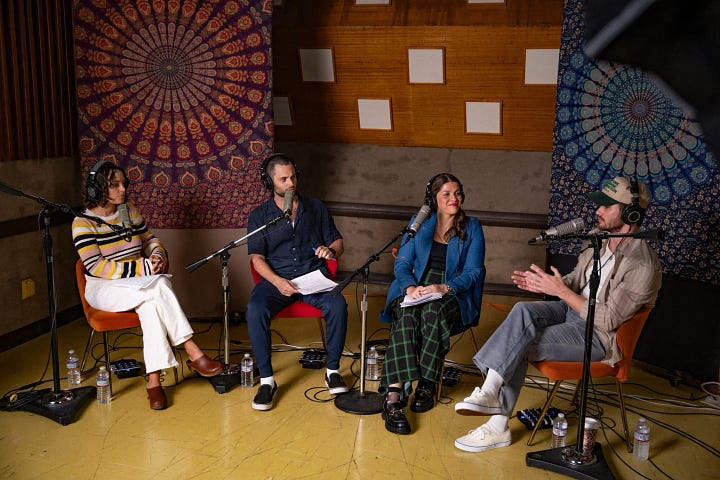
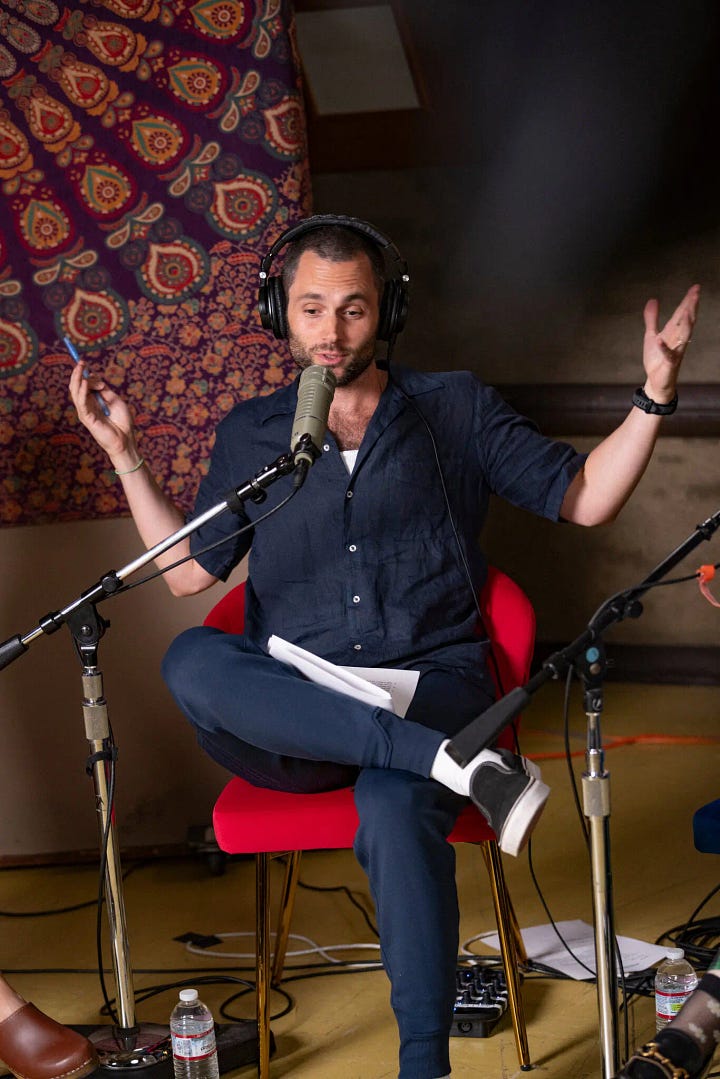
Netflix's Games division conducted layoffs this week. Turns out I wasn't the only one curious about its investment in games; Wall Street had questions too. Three years in and 100+ games later, the effort has produced few hits, and only a tiny percentage of Netflix's subscribers had played its games as of 2023. Also, last week, new-ish games president Alain Tascan brought on Jeet Shroff (also from Epic) as VP of Games Tech to promote consistency across the company’s game portfolio.
Good news from Netflix is that they're developing a series adaptation of Pride & Prejudice, with Daisy Edgar-Jones cast as Elizabeth Bennet.
According to a trove of documents obtained by Kentucky Public Radio and NPR, TikTok's algorithm prioritizes beautiful people (shocker), executives quantified the precise amount of viewing it takes for someone to form a habit (260 videos or 35 minutes), and they knew that limits on TikTok barely had an impact (those time prompts don’t work). ByteDance’s own internal investigation also found that kids as young as 15 were stripping on TikTok’s live feature for adults who were paying for it.
The New York Times is suing Microsoft and OpenAI for using its content without pay or permission. In addition to asking the court to stop OpenAI's use of its content, they want all data sets that include their work to be destroyed, and they’re seeking damages. A fair call, but a tall order all the same. Someone needs to take a look at fair use law and decide what's what.
Amazon is investing over $500 million in nuclear power. Earlier this week, Google announced it will purchase power from SMR developer Kairos Power, and Constellation Energy is restarting its nuclear plants to power Microsoft’s AI expansion. As I’ve said before, AI needs data centers, and data centers need nuclear power.
Molly Baz breastfeeding on a billboard in Times Square is the third part of what has to be the longest-running "if you know, you know" brand moment I've witnessed in a while. Back in May, the cookbook author and former Bon Appétit senior food editor partnered with breastfeeding company Swehl on a recipe for lactation cookies. Swehl put a very pregnant Molly on a Times Square billboard, which was soon taken down after being deemed “inappropriate.” A few days later, Seed entered the chat and put her back up in solidarity to help normalize pregnant bodies. Now, Molly—baby in tow—is back on a Times Square billboard, this time sponsored by bobbi, which makes organic infant formula. Bobbi does a great job with marketing in general, but I especially love the narrative arc here. This needs to be the end, though.
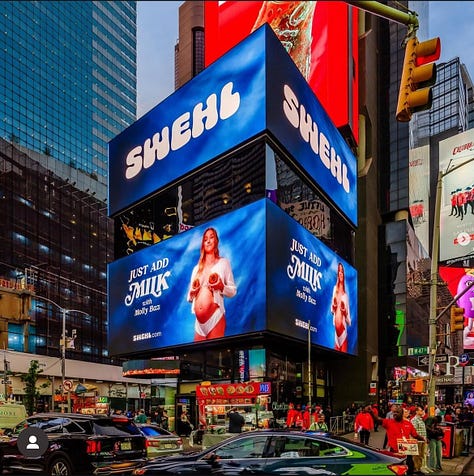


Queue the teen-are-hopped-up-on-caffeine moral panic. Bloomberg wrote this piece about how teens love Starbucks much like they love Sephora, and I want to believe we’ll all take this as what it is—kids playing grown-ups—but these days I trust no one. Greenlight, a debit card company for kids, says Starbucks was the fifth-most popular destination for their cardholders last year, falling behind only Amazon.com, Target, Apple, and McDonald’s. Starbucks gift cards are also the top food or restaurant cards for teens, ahead of both Chick-fil-A and McDonald’s, according to market-research group KidSay. Starbucks loves to pretend this is a happy coincidence (“we do NOT market to children”), but their lineup of cold, colorful beverages says otherwise. The plot twist would be if Starbucks makes a comeback as the Gen Z/Alpha third place.
I do love when founders call out copycat brands on LinkedIn. This one is especially weird because Phlur and Salt & Stone are similarly sized brands, at least from their Instagram followings. Anyway, living for the drama and all that.
LVMH shares are down, investors are scared, and I feel bad for no one involved. The fashion conglomerate—which owns Dior, Tiffany, Fendi, and more—reported yesterday that sales fell 5% in the last quarter. The usual reasons were cited: weak demand in China; weak demand everywhere. But what’s more, this marks the company’s first slump in its core fashion and leather goods unit since the onset of the pandemic, although revenue growth has been shrinking for a while. Because LVMH is a bellwether for the luxury fashion sector, shares in competitors Hermès and Gucci also fell yesterday. Luxury fashion has made a number of missteps in the last few years, not least of which are the insane price hikes. Today’s luxury prices are, on average, 54% higher than before COVID, according to HSBC. Chanel’s 2.55 flap bag has increased by 9%; Louis Vuitton’s Speedy is up by 100%. Luxury doesn’t do price cuts, so they’re pushing beauty and fragrance instead—and keychains. Lower-priced entry-level products are a great way to introduce new consumers to a brand without necessarily diluting exclusivity, hence the 3% growth in LVMH’s perfume and cosmetics division. Not sure how long they can ride that wave, but it’s as good a wave as any to be on.
An Erewhon Wellness event is the height of a lot of things in the zeitgeist right now. I’m sure you understand.
Baby boy Tom Holland launched a non-alcoholic beer company called Bero. You know I adore the "being vulnerable about your struggles to launching a brand to address said struggles" celebrity pipeline. The branding is great, honestly—like Lacoste in a bottle. Very clean, active, mildly WASPY, fun vibes. What I find most interesting is their membership program. First of all, tt’s noteworthy that they launched it right out the gate. Free members get free ground shipping over $50 and earn credits on purchases (in return, they get your email address). But with the $55-a-year membership, members get 10% off each purchase and access to exclusive Q&As with Tom Holland. Now isn’t that a bit wild.
There’s a gigantic vibrator at the Louvre, and it belongs to Maude. The intimacy wellness brand is a co-sponsor of “Private Lives: From the Bedroom to Social Media” at the Musée des Arts Décoratifs in Paris, opening today and running through March 30, 2025. The exhibit dives into the shifting boundaries of privacy through the centuries, and it took me all this to remember that Dakota Fanning is the brand’s co-creative director. I can’t get a read on how intimacy wellness is performing as a category. (Please tell me you caught the pun!) Brands are shutting down, but new ones are popping up, and female Viagra is part of the conversation again. Saks Fifth Avenue recently phased out sexual wellness in stores, but everyone buys that stuff online anyway. Does someone want to talk to me about this?
I actually think this Facebook Gen Z redesign has legs. Last week, Meta announced a series of changes to the app that put greater emphasis on local community information, videos, and Facebook Groups. The new design aggregates local content and recommendations and uses AI to answer commonly asked questions within specific Facebook groups. According to data from the Pew Research Center, only 33% of U.S. teens were on Facebook as of last year, down from 71% in 2014. If young people are using Facebook, it's because of Groups and Marketplace, so positioning itself as an app that caters to local information and experiences could fill a pretty important gap in the social market. Meta is also redesigning the main Facebook interface in the image of TikTok, but I don’t know about all that.
As you know, Rare Beauty occasionally gives me the ick with their mental health marketing, but they launched their first global ad campaign today, and I kind of like it. There’s a certain demographic—younger Gen Z women—that will really resonate with the "Every Side of You" messaging. Watching the video, I realized that Rare Beauty is one of the few brands that have managed to get "diversity" right without making it a whole thing. Honestly, it should never have been a whole thing, it’s embarrassing otherwise. I’ll share more thoughts as the campaign unfolds, but Ochuko is not mad.
The sad thing is that I know at least five girls who would be all too happy if I got them this Taylor Swift Era’s Tour Book for Christmas. Ages range from 14 to 30.
Private equity firms around the country are buying up home services like HVAC, plumbing, and electrical companies. While they’re at it, they’re turning skilled trade small business owners into millionaires. One PE investor said, “Everybody and their uncle owns an HVAC business in the private-equity space today.” Private equity investors have purchased nearly 800 HVAC (heating, ventilation, and air conditioning), plumbing, and electrical companies since 2022, according to data from PitchBook. They consolidate these businesses to form larger entities and enhance margins through managerial expertise, back-office efficiency, and increased marketing and recruiting budgets. Of course, this means higher prices for consumers and less competition, but it’s Private Equity’s world, and we’re all just living in it. Aaron Rice, who sold his plumbing business to a HVAC PE backed company said he’s all the better for it. “I want to hunt, fish, drink beer and cook meat.” He has the logo of the company that bought his tattooed on his leg.





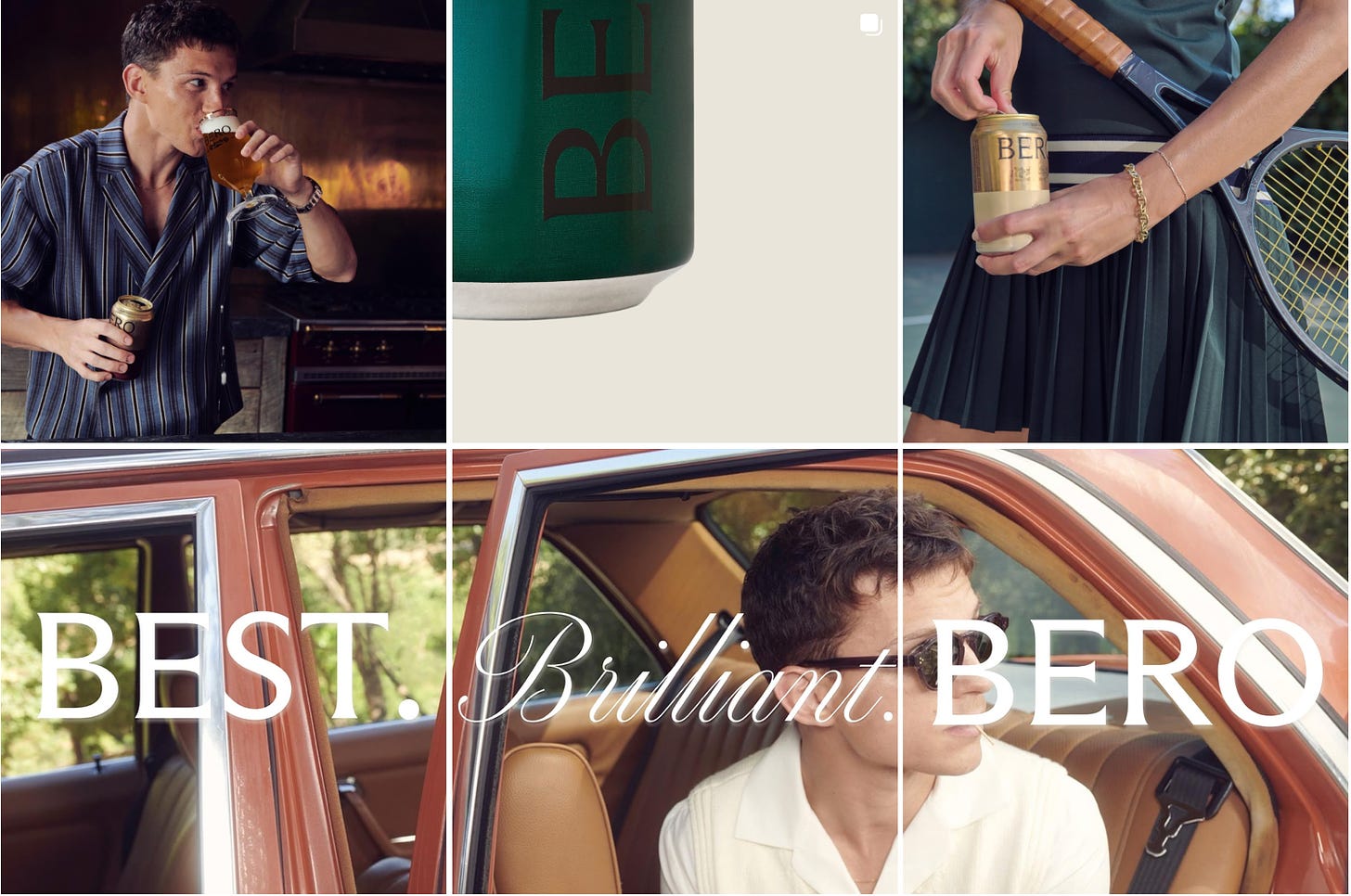
A joy to spot myself in one of my fave (meatball) subs. FWIW: I think the older supers (Moss, Herzigova, etc) are *more* expensive than the regular catwalkers. (Can a model agent pls enter the chat and confirm!?) My other note - I wonder if the reason it felt like such a damp squib was bc they had Emanuelle Alt styling it… her style is so lowkey and French (dishabille rather than glossy) and does not translate to this particular catwalk imho
Another great newsletter as usual! Waiting to see now if HVAC services will double in price and halve in quality…